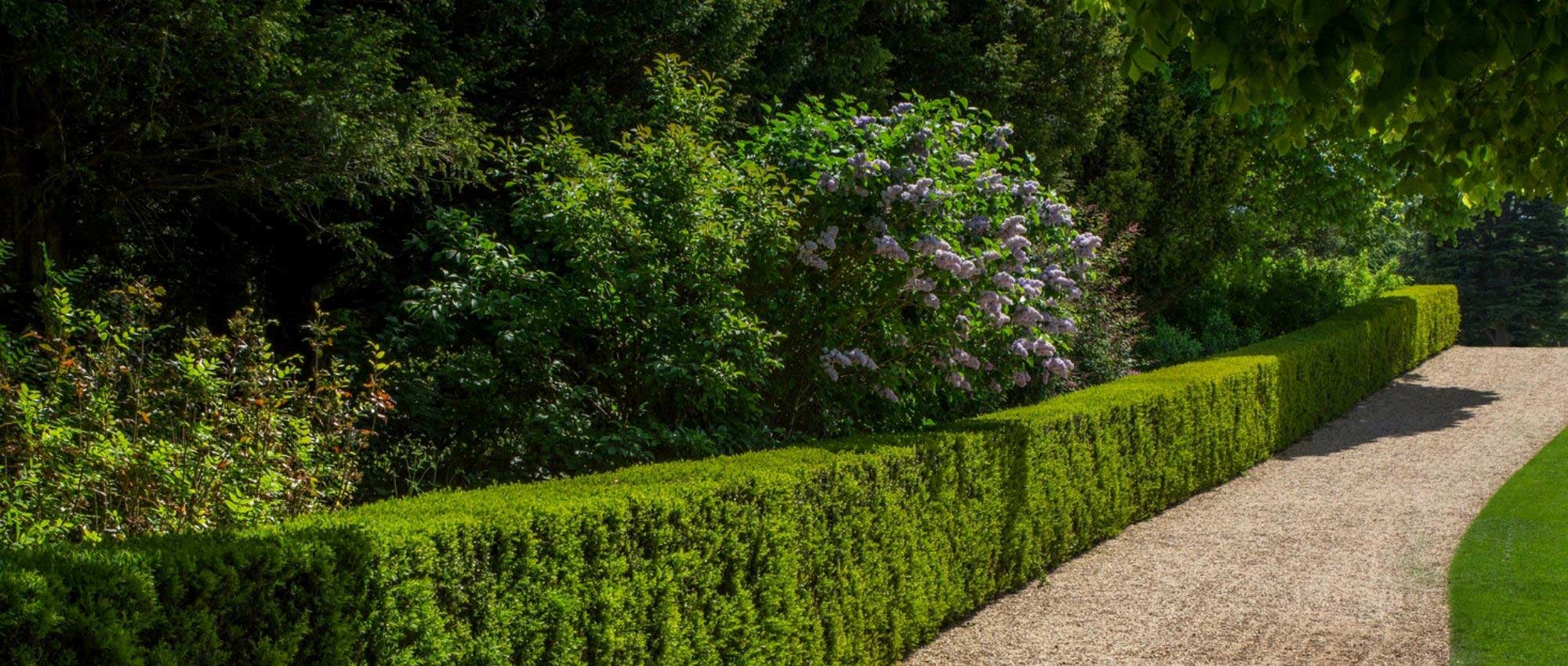
Hedges, bushes, trees: what planting distances?
All our tips for every situation!
Contents
Trees and bushes are structuring elements of a garden, bringing height and helping create a superb green, tree-filled setting. These are plants that develop over the long term, often reaching large size at ripeness. It is therefore important to think about their location at planting, whether for a hedge, a copse or a specimen planting. Respecting correct planting distance for a hedge and planting distance between two bushes or trees ensures their proper development while avoiding neighbour disputes or damage to buildings.
Planting distances are measured from centre of young plant to centre of next. They depend on three factors :
- Desired effect (screening, or showcasing plant architecture). In a hedge, for example, bushes will be planted close together, whereas if you wish to showcase their architecture in the garden, you will plant them much more widely spaced.
- Height and spread of plant at ripeness. Trees and bushes with a very upright silhouette obviously need less space than those with a wide, spreading habit.
- How they will be pruned and maintained (regular pruning or not)
Spacing between plants may also depend on your budget. The denser the planting, the higher the cost, while it is possible to achieve a lovely visual effect with a little patience and a limited number of young plants, by respecting planting distances, which will allow them to thrive best.
What does the law say about planting distances for a hedge or a tree from neighbouring property?
On property boundaries, planting distance of a hedge, bush or tree is governed by the Civil Code.
The distances to be observed in relation to neighbours are as follows :
- Planting distance for a hedge, tree or bush less than 2 metres high :
They must be planted at at least 50 cm from the property boundary. (In practice, we recommend keeping 80 cm to 1 m distance from the boundary of your land. This will make pruning and maintenance easier). - Planting distance for a tree or bush more than 2 metres high :
They must be planted more than 2 metres from the property boundary.
If you do not comply with these rules, neighbours can force you to uproot them, cut them to regulated height, or prune branches that overhang onto their side.
There may also be other, more restrictive rules that apply, depending for example on a PLU or on estate regulations.
For more information, discover our fact sheet Planting trees and bushes: what does the law say?
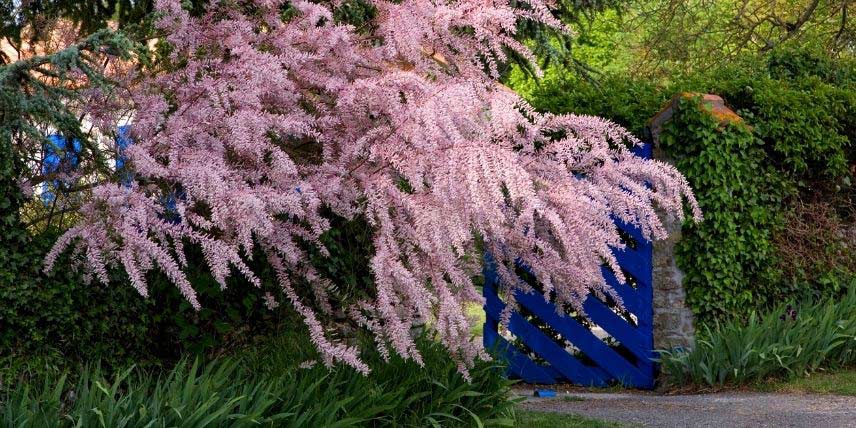
What spacing should be used when planting a hedge?
In a hedge, to create an effective screen, bushes should be planted fairly close together. A hedge aims for a dense, regular appearance. In a traditional hedge, for example made of hornbeam or box, with medium-sized bushes, planting distance is generally 60 to 80 cm.
However, for small bushes (that do not exceed 1 m in height) planting distance in the hedge can be reduced to 50 cm. Conversely, large bushes require spacing of 1 m to 1.20 m, so they do not crowd each other at ripeness.
Similarly, defensive hedges can be planted fairly close (50–60 cm), as can small low clipped hedges (box, etc.): 30 cm spacing…
Where possible, if garden area is large enough, we recommend planting staggered, on two ranks, rather than making a single-rank hedge. Effect obtained will seem much bushier and more natural!
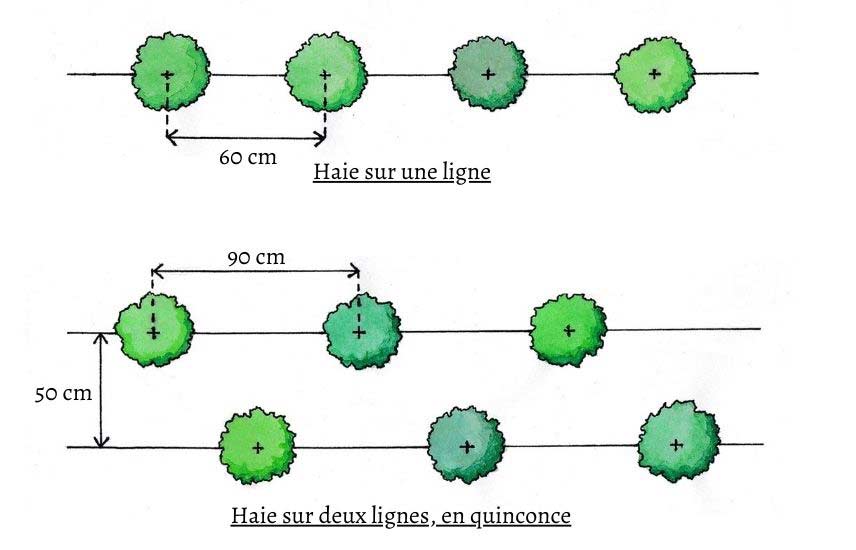
These are guidelines: there is no absolute rule, and hedge planting distances depend on bushes you choose, and on the many varieties that have differing heights, spreads and habits.
For more advice and information, see our advice sheet How to plant a hedge?
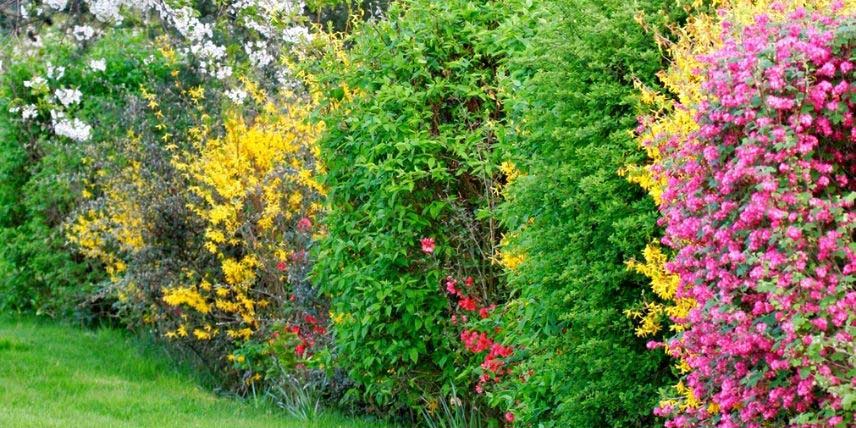
A country hedge, combining different species of flowering bushes
Discover other Shrubs
View all →Available in 0 sizes
Available in 1 sizes
Available in 1 sizes
Available in 1 sizes
Available in 1 sizes
Available in 1 sizes
Available in 1 sizes
Available in 1 sizes
Available in 1 sizes
What spacing should be left between two bushes or two trees in the garden?
For ornamental trees and bushes planted in a garden, planting distances between two specimens are greater than for hedges. This helps to showcase them and leaves room for them to flourish fully. Indeed, garden bushes are pruned much less than hedge bushes.
When trees or bushes are planted closely together, they tend to grow more in height than in width, reaching for light. They grow taller faster but become less full. They produce more branches and leaves at the top, while the lower part of the tree is more open, lower branches risking death from lack of light.
Start by determining the span at ripeness of each tree or bush you plant. This will give an indication of the distance to maintain. If you plant bushes that reach 3 metres in span, allow at least 3 metres between two bushes. And if you plant two different species, add their spans together and divide by two. For example, if you plant a bush with a 3-metre span and another with a 2-metre span, you should allow 2.50 metres between them.
By respecting planting distances between two bushes, you may be disappointed with the result in the first years, as the area may look empty and very sparse… But later, after a few years, the bushes will have filled out and had enough room to develop harmoniously. All the space will be occupied without the bushes interfering with each other.
You can also create small clumps of bushes by planting them fairly close together, creating a lovely backdrop for a flower bed. Similarly, you can plant a few bushes close together to create a refugium for birds and wildlife, which can shelter there.
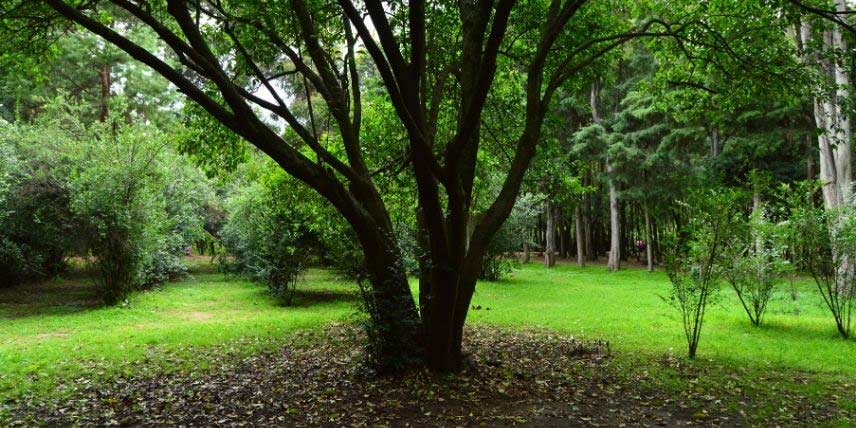
Read also
How to plant a hedge?How far from a wall or building should a hedge or tree be planted?
It is important to respect minimum planting distances from walls and buildings, as tree roots can damage a house’s foundations. Anti-rootstock barriers used for bamboo are not effective at stopping trees’ powerful roots.
Trees should be at least 6 m from buildings so their root system does not damage walls. Allow about 10 m for larger specimens such as plane, pine, cedar, tulip tree, walnut. For smaller trees (Cercis, hawthorn, apple, Prunus, sumac…), distance should be at least 2.5 m, ideally 3 m.
Regarding bushes, smaller ones should be at least 60 cm from house foundations, medium-sized bushes about 90 cm, and large bushes at 1.2–1.5 m.
In general, bushes should be planted at a distance corresponding to half their spread at ripeness. For example, if a bush reaches 3 m spread, plant it 1.5 m away.
Be careful, because some trees and bushes are suckering — they produce suckers from their roots! This is the case, for example, with black locust (Robinia pseudoacacia), ailanthus, quaking aspen, Populus tremuloides, Sorbaria sorbifolia, Rhus typhina and common lilac Syringa vulgaris. They readily give rise to new young plants, which can be somewhat invasive and may even spread into neighbour’s garden if planted on boundary of your plot.
Also note that some trees have aggressive roots that can damage pipes, drainage systems or house foundations. This applies to poplar, elm, willow, black locust and silver maple. Be vigilant and avoid planting them close to your house.
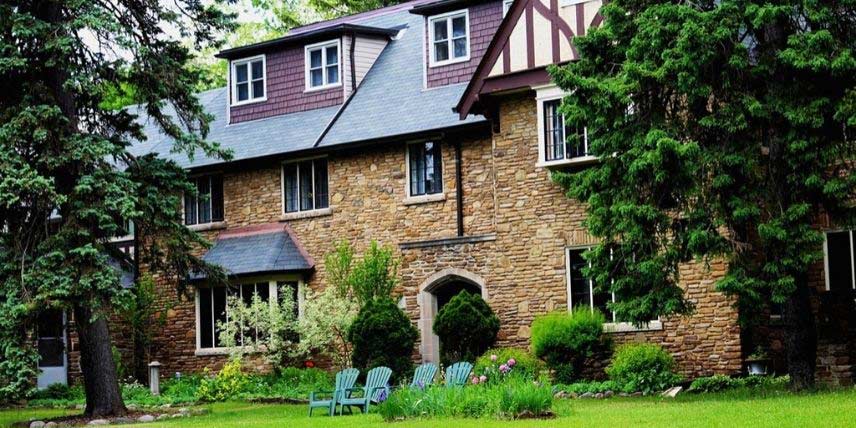
- Subscribe!
- Contents
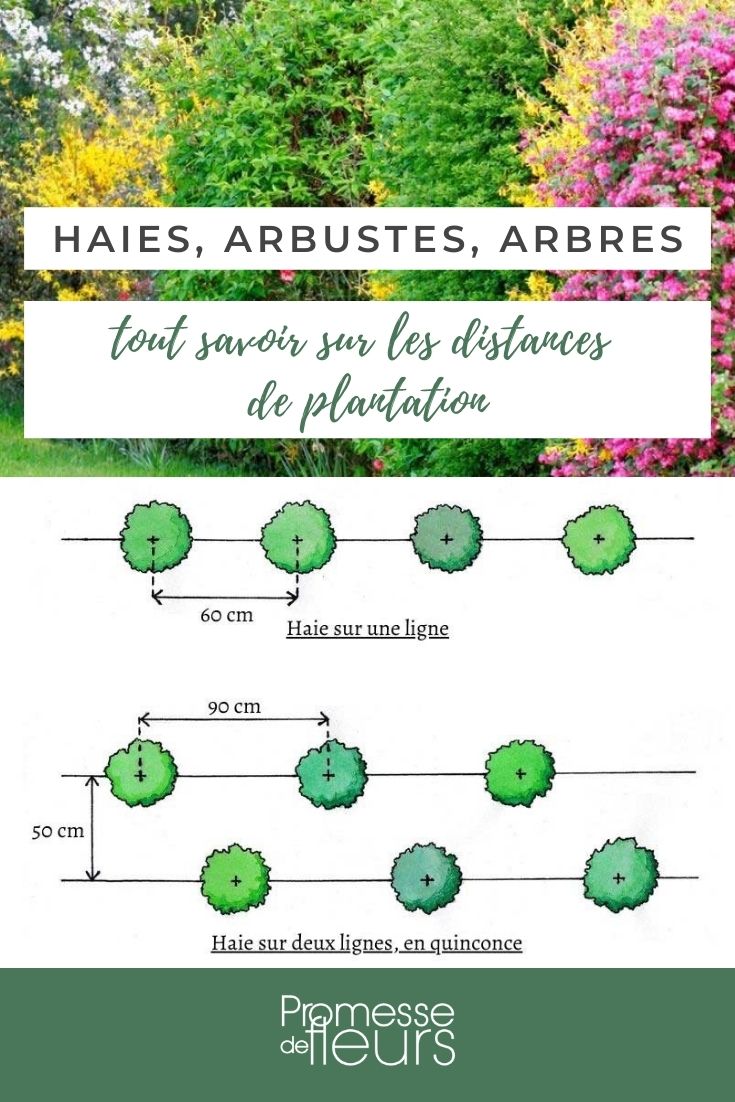

































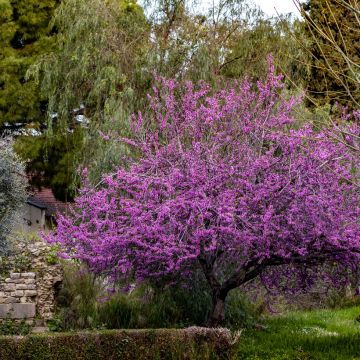


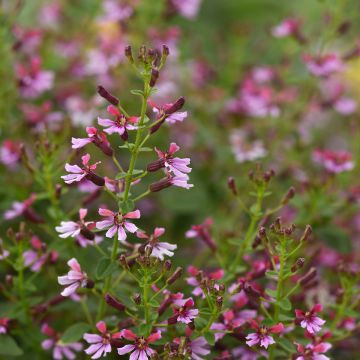


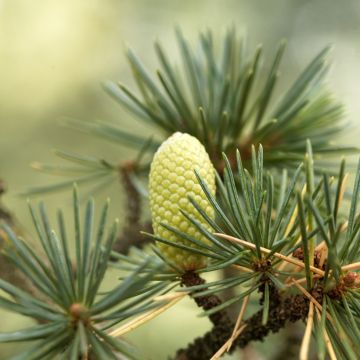
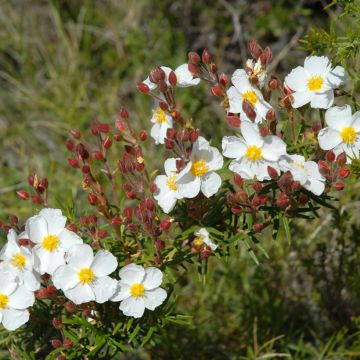
Comments